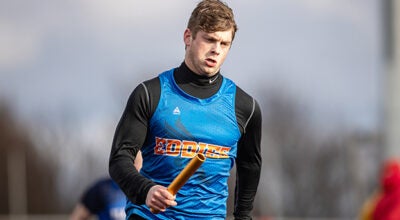Volleyball clubs a big winner, but at what cost?
Published 9:35 am Thursday, August 30, 2018
By HUGH BERNREUTER
MLive.com
WALKER — More than 10 years ago, a federal judge ruled that the Michigan High School Athletic Association violated Title IX law and the 14th amendment because of the placement of its girls sports season.
But the impetus behind the lawsuit, according to several coaches and administrators, was the best way to get high school sports out of the way so the top volleyball and girls basketball players could play in club sports nationally for an entire season.
“We don’t recruit high schools,” University of Michigan volleyball coach Mark Rosen said. “We recruit clubs.”
When Diane Madsen and Jay Roberts-Eveland formed Communities for Equities and filed a gender-equity lawsuit in 1998, the Michigan sports season included volleyball in the winter and girls basketball in the fall.
During the process, federal judge Richard Enslen ordered the MHSAA to create compliance plans to equalize the number of “disadvantaged” seasons between boys and girls sports. He ruled that volleyball, girls basketball, girls swimming, girls soccer, girls tennis and girls golf were in “disadvantaged” seasons, basing his opinion on NCAA and other state association schedules.
But Enslen denied the MHSAA compliance plan that equalized the “disadvantaged” seasons without changing volleyball and girls basketball. When the association submitted a plan that moved volleyball to the fall, Enslen approved it, syncing Michigan high school volleyball with every other high school volleyball season in the country except Vermont, which did not sponsor volleyball.
“The change was monumental for club volleyball in this state,” Rosen said. “It changed everything. Before the change, there were really no strong national-level club teams in the state. Now there are six or more clubs in Michigan that are at a national level, including a couple like Legacy and Michigan Elite that are among the best in the country.”
The high school volleyball season officially began Aug. 17, with the state-championship games Nov. 17.
That puts the top players in position to play a full season of AAU volleyball.
“Before, they couldn’t start until April, and they would miss half of the club season,” North Branch athletic director and volleyball coach Jim Fish said. “Players from the other states would be playing at a national club level December through July.
“It was good for volleyball. Volleyball people will tell you that. The club scene has exploded. It also has become more of a have and have-not situation for high schools. If your players are not playing club, you’re just not going to be able to compete at a state level. It’s that simple.”
According to Heather Sawyer, president of the Michigan High School Volleyball Coaches Association, there are two different arguments.
“Are you talking about high school development or about developing players for college?” said Sawyer, the head coach at Battle Creek Lakeview. “It’s no different than kids that play AAU basketball or summer baseball. It creates opportunities, which was the whole point.
“Even before the switch, where did college coaches see the majority of the top players? Coaches went to the big club tournaments whether it was volleyball or baseball or basketball. College coaches could see a lot of kids in one place.
“It’s where it was trending anyway.”
But to the MHSAA and executive director Jack Roberts, college recruiting is not the purpose of high school athletics.
“We have and always will focus on the educational aspect of high school sports for all student-athletes,” Roberts said. “When we focus on what’s best for the elite athletes and not for all athletes, we really devalue what really takes place.
“For us, it mattered that as many possible students played where those lessons are learned. Getting a college scholarship is nice, but it’s a statistical anomaly. To base your philosophy on a statistical anomaly damages the reasons for high school sports to exist.”
Since the seasons changed, participation numbers have fallen overall for high school students in Michigan. It has also fallen for boys, girls, girls basketball and girls volleyball. Enrollment, however, has also fallen during the same time period.
The growth of volleyball clubs in Michigan has also impacted high school basketball in Michigan.
“Before the seasons changed, the volleyball players didn’t have AAU volleyball in the fall, so you were more likely to see some of those very good athletes playing basketball,” Saginaw Heritage girls basketball coach Vonnie DeLong said.
“Now, the really good volleyball kids aren’t playing basketball and the really good basketball kids aren’t playing volleyball. I’ll get kids who play other sports who want to play basketball, but volleyball kids don’t play because of the AAU season.”
Justin Freeland is the varsity coach for both volleyball and girls basketball at Bullock Creek High School. He sees the strain the seasons change has put on the different programs.
“That volleyball players were not able to play in club sports is a viable argument,” Freeland said. “But you also have to understand that it will hurt both sports. It will lead to specialization. Volleyball players in club sports will not play high school basketball, and it’s the same way for basketball players in club sports playing high school volleyball.
“It hurts both high school sports.”
But for Rosen, the arguments about the strength of high school basketball programs in the state of Michigan pale to the benefits the decision provided for volleyball in the state of Michigan.
“It gave players the ability to compete nationally,” Rosen said. “It has helped players improve to the top level nationally, and it’s increased their ability to get recruited nationally.
“The decision lifted the boat for everybody.”
— Tribune Content Agency, LLC.






